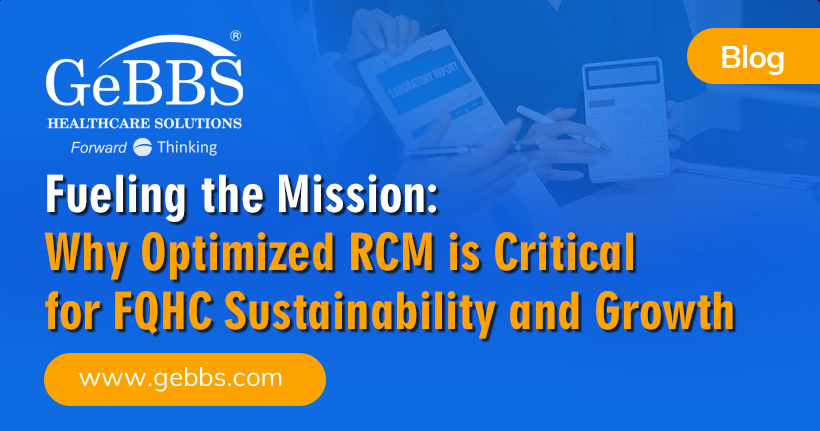Revenue cycle management (RCM) is crucial to the healthcare industry. Providers cannot bring in the revenue necessary to maintain a business without an effective billing and reimbursement process. However, a lack of standardization and inefficient processes have long kept healthcare organizations from achieving optimal patient care and financial performance.
With the increasing complexities of healthcare regulations and the rising cost of medical care, it is more important than ever for healthcare organizations to provide transparency in their revenue cycle management processes. Transparency in RCM refers to clear and open communication between healthcare providers, patients, and payers about the cost of services, insurance coverage, and billing practices.
This article explores the importance of transparency in the healthcare revenue cycle management process, its benefits to healthcare organizations and patients, and the challenges that must be overcome to achieve it. It also discusses strategies for achieving transparency in RCM and how it can help healthcare organizations improve their financial performance, compliance with regulations, and overall quality of care.
Why Healthcare Benefits From Revenue Cycle Management Transparency
While challenging for some providers to achieve, revenue cycle management transparency is no longer optional. It is vital to patient satisfaction, billing accuracy, compliance with regulations, quality of care, and reputation. By prioritizing transparency in the RCM process, healthcare organizations can improve the overall patient experience and financial performance while ensuring compliance with regulations and delivering high-quality care.
Here are some of the reasons why transparency is essential in RCM.
Improve Profits
Complexity in the billing processes and opaque RCM practices will inevitably lead to waste. In fact, almost one-quarter of healthcare spending, a shocking $265 billion a year, is lost because of administrative waste.
Transparency in the billing process can help healthcare organizations improve their cash flow and reduce the time and resources spent on billing and collections. Understanding where money goes will help providers improve their administrative practices, leading to increased revenue and enhanced financial performance.
Identify Care Gaps
Clear documentation and billing data can help providers identify care gaps, leading to enhanced patient care. Transparent documents help providers identify gaps by providing a clear and complete picture of a patient’s medical history, current health status, and ongoing needs.
Comprehensive billing data can help providers identify gaps in care by showing which services have been provided and which have not. Providers can then identify services that have been missed or not performed according to best practices.
Enhance Efficiency
Transparent and standardized billing practices help healthcare organizations identify and resolve billing errors more quickly, which can lead to improved accuracy and efficiency in the revenue cycle management process. Transparency in RCM reduces the time-consuming complexities between insurance companies and providers over what each patient owes. Plus, better accuracy means less time spent fixing and resubmitting rejected claims.
Maintain Compliance
Lawmakers are increasingly holding providers accountable for transparent billing practices. Regulations are in place that require providers and insurers to inform patients up-front and provide clear billing information. Implementing transparent billing practices will help organizations stay compliant with complex healthcare regulations and avoid penalties for non-compliance.
Establish Trust and Credibility
For years, patients have dealt with unexpected bills long after they received the services billed and navigated complex healthcare billing processes. It has led to increasing disillusionment and distrust in the healthcare system. Enhancing transparency in the RCM process can help healthcare organizations rebuild patient trust by providing them with prompt and upfront billing practices.
Transparency in the revenue cycle management process will help increase credibility and trust, which helps providers improve their reputation and attract and retain patients.
Increase Patient Satisfaction
Over the past few years, economic factors have made patients far more cost sensitive. Rising inflation and impending recession fears have caused many patients to think twice about even necessary medical expenses. Providers can help patients feel more in control of their healthcare experience with transparency.
Patients who benefit from transparency are less likely to feel surprised or frustrated by their medical bills. Healthcare organizations will be rewarded with improved patient satisfaction and loyalty.
Challenges to Achieving Revenue Cycle Management Transparency
Every industry is rethinking payments and payment structures as businesses grow increasingly digital, but health care faces the most challenges. However, they are also under the most pressure: changes to regulations forced most health plans and issuers to post pricing information.
Unlike other industries with transparent costs and billing, the healthcare revenue cycle has several issues that keep pricing opaque.
Complex healthcare regulations. Healthcare regulations are complex and constantly evolving. It makes it challenging for providers to understand and make immediate changes to comply with them. This complexity makes providing transparent billing statements and claim submissions that patients understand difficult.
Limited resources. Especially in the wake of the Great Resignation, many healthcare organizations are forced to operate with limited resources and staff. It makes it difficult for them to invest time and money into their processes to support transparency in the RCM process.
Cultural resistance. The culture of an organization or office is essential to embracing changes. Some providers and staff may hesitate to adopt new technologies or processes that require modifications to their existing workflows.
Lack of standardization. While flexibility allows organizations to provide care tailored to their patients, the lack of standardization comes with challenges. It is difficult for providers to establish consistent processes and best practices for achieving transparency.
Tips for Achieving Revenue Cycle Management Transparency
The good news is that there are more tools and solutions than ever to help healthcare organizations achieve revenue cycle management transparency. When combined with the right processes, providers can start taking advantage of the benefits of a clear and consistent approach.
Here are some ways to improve transparency in your RCM processes:
- Improve patient communication by providing clear and concise information about the cost of services, insurance coverage, and out-of-pocket costs.
- Give patients clear and concise billing statements that are easy to read and understand.
- Use proper documentation and medical coding with automation.
- Develop an effective and standardized denial management process with clear communication to patients and payers about why the claim is denied and how to appeal.
- Train staff on transparency practices to ensure everyone in the RCM process understands the importance of transparency and how to achieve it.
- Use technology to improve transparency by automating processes, providing real-time data, and improving communication with patients and payers.
Create a Transparent RCM Process to Improve Your Business
By prioritizing transparency in revenue cycle management, healthcare organizations can improve patient satisfaction, financial performance, and compliance with regulations while delivering high-quality care. Achieving transparency requires clear communication, accurate documentation, and medical coding, effective claims denial management processes, technology, and staff training. GeBBS Healthcare Solutions has the tools you need. Contact one of our experts today at gebbs.com to see how GeBBs can help optimize your revenue cycle management processes to achieve transparency in RCM.






